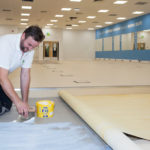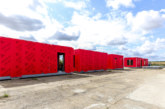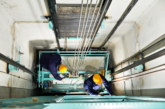There is no doubt that floor coverings in schools take a lot of punishment throughout their lifetimes. Neil Sanders, Technical Director at leading subfloor preparation products and adhesives manufacturer, F. Ball and Co. Ltd., explains how to ensure a long-lasting professional flooring finish in education facilities while working to tight deadlines.
Installing floor coverings in any environment requires proper subfloor preparation to ensure a long-lasting professional appearance. Incorrect or insufficient preparation can create the potential for floor failure, leading to costly recalls and remedial work. In educational settings, there can be additional pressure for projects to be completed as quickly as possible. Fortunately, the latest fast-track subfloor preparation products and adhesives for floor coverings mean flooring installations that would once have taken a week can be done in a day.
Creating a base
An important part of any flooring installation is the application of a suitable levelling compound to create a perfectly smooth and sturdy base for the receipt of floor coverings. The fastest setting products on the market are ‘walk-on’ hard in 30 minutes and ready to receive new floor coverings from 45 minutes.
High performance levelling compounds that can be applied directly over well-bonded bitumen and adhesive residues, eliminating the need for their mechanical removal, also offer significant timesaving benefits for contractors undertaking refurbishment projects to a deadline. One such product takes as little as 60 minutes to set and is ready to receive floor coverings from as little as four hours.
Choosing the right adhesive
Once the levelling compound has cured, the contractor can then select a suitably fast-working
adhesive to install appropriate floor coverings. The choice of adhesive will be determined by what type of floor coverings are being installed and where, but there are options for when timesaving is a priority. Currently, acrylic and vinyl adhesives are available that build up a strong enough bond to allow for foot-traffic in less than an hour after the application of floor coverings.
It is always advisable to check the compatibility of particular floor coverings and adhesives to ensure against floor failure. For this purpose, F. Ball produces its Recommended Adhesives Guide (RAG), which details the compatibility of its adhesives with over 6,000 floor coverings, produced by over 200 manufacturers. A continually updated version of the guide is available on the F. Ball website and as a free app. Contractors can also consult floor covering manufacturers instructions.
Prior preparation
Before undertaking any flooring installation, a thorough assessment of the subfloor should be completed to ensure it is sound, smooth and free of contaminants. If the subfloor is a newly installed screed, laitance may still be present. To avoid costly floor failure, both laitance and contaminants, including old adhesive residues if the project is part of a refurbishment (unless a levelling compound that can be applied over old adhesive residues is being used), should be mechanically removed before proceeding with a flooring installation. Dust or debris should also be swept away, and damaged subfloors should be repaired with an appropriate floor repair compound.

Safeguarding against moisture
Unmanaged subfloor moisture, whether residual construction moisture or rising damp, is one of the leading causes of floor failure. For this reason, a moisture measurement test, to determine subfloor moisture levels, should be conducted as part of any flooring installation.
One way of measuring subfloor relativity humidity (RH) levels with certainty, and the method advocated by British Standards, is to use a pre-calibrated hygrometer. If RH levels exceed 75% (or 65% when installing timber floor coverings), a moisture management solution will be required to stop excess subfloor moisture potentially causing floor failure.
Liquid waterproof surface membranes are the usual moisture management solution. The best-performing epoxy waterproof surface membranes will fully cure in as little as three hours and isolate excess subfloor moisture where relative humidity values are up to 98%, with a single coat application.
Quicker, two-coat systems are available that will create an effective barrier against residual construction moisture where relative humidity values are up to 95%. The first coat cures in 15-20 minutes, and a further 30 minutes curing time is required for the second coat.
Prime importance
Once the subfloor is suitably sound, smooth and dry, or a suitable moisture management solution is in place, it will be essential to prime the subfloor in almost all circumstances. When used over non-absorbent surfaces, such as waterproof surface membranes, priming promotes adhesion between the subfloor and subsequently applied levelling compounds. Applied over absorbent subfloors, such as concrete, sand/cement screeds or plywood, priming also prevents the unacceptably rapid loss of water from the levelling compound into absorbent substrates, maintaining its working time.
Priming also prevents ‘pinholing’; small holes in the levelling compound that have the appearance of pinholes or blisters caused by the slow escape of air from absorbent surfaces as the levelling compound cures. One exception to the need for priming is when working with levelling compounds that can be applied directly over old adhesive residues, such as F. Ball’s Stopgap 1200 Pro. When used in this way, there is no need to prime beforehand.









